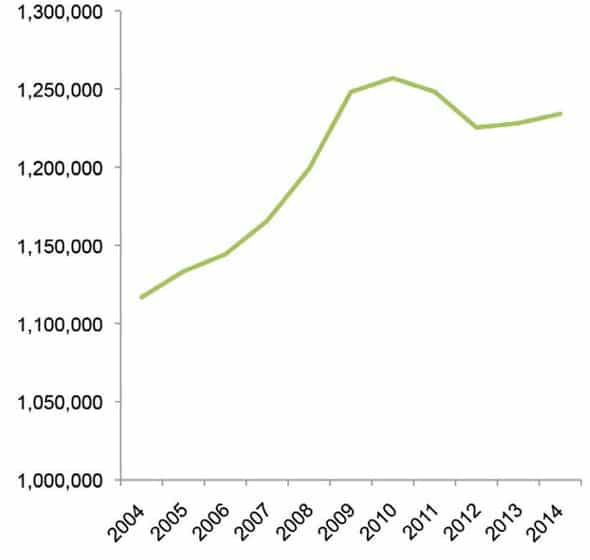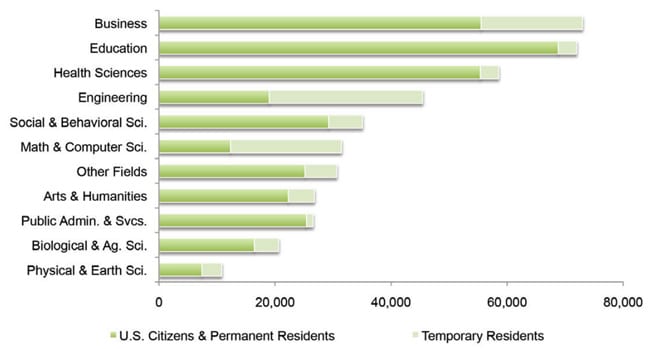International students driving growth in US graduate programmes
The Council of Graduate Schools (CGS) reported earlier this month that first-time graduate enrolment in the US grew 3.5% between fall 2013 and fall 2014. This represents the largest, single-year increase since 2009 and certainly bodes well for future enrolment trends. However, total graduate enrolment in America remains below the recent-year peak of 2009 and grew by only 0.4% overall between 2013 and 2014. The real story in the CGS report is that international students have been driving much of the growth in US graduate studies for the past decade. Between 2004 and 2014, foreign students accounted for more than two-thirds of the growth in first-time enrolment head counts in US graduate programmes. Further, first-time international student numbers grew by 11.2% between 2013 and 2014 alone, and foreign students accounted for 21.6% (102,775) of all new graduate students in the US last year. First-time enrolments by US students, meanwhile, grew by only 1.3% for fall 2014 (nevertheless also representing the largest year-over-year growth in domestic enrolment since 2009). The tally of total graduate enrolment in the US – both first-time and continuing students, that is – shows a similar contrast between foreign and domestic growth. Total foreign enrolment grew by 9.4% between fall 2013 and fall 2014, effectively offsetting a decline in total domestic student numbers of 2.4%. As a CGS statement puts it, "The contributions of international graduate students are becoming increasingly important to the US graduate education enterprise."
"The increase in overall enrolments is good news," added CGS President Suzanne Ortega. "But the disparity between US and international growth is a cause for concern."
The findings are based on a unique annual survey of US graduate schools and published in a new report from CGS: Graduate Enrollment and Degrees: 2004 to 2014. The latest survey gathers responses from 636 US graduate institutions which together received more than two million applications, extended over 850,000 offers of admission, and enrolled 479,642 first-time graduate students in fall 2014.
The bigger picture
"The [latest CGS enrolment figures] are striking because there is often an inverse relationship between the economy and graduate school enrolment," says The Washington Post. "People pursued advanced degrees in high numbers at the outset of the financial crisis but pulled back amid a protracted recession and the rising cost of attendance.
While job prospects have improved, the cost of graduate school continues to climb, along with student debt. The jump in enrolment from 2013 to 2014 shows that students are willing to make the gamble."

All eyes on STEM
The growing profile of international students is also helping to shape broader enrolment trends in US graduate studies.
For one, international enrolment is heavily concentrated in STEM fields (science, technology, engineering, and math). Nearly six in ten (57%) foreign graduate students in the US were enrolled in STEM subjects last year. In comparison, only 16% of US students were studying in those same fields.



















